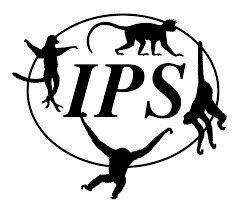Members of my lab are currently working on several research projects. Our principle field site is in Costa Rica, but I collaborate with researchers working at field sites around the world. Our main areas of research are:
Variation in the pace of aging in white-faced capuchins
Chronological age is a strong predictor of health and lifespan, yet the process of biological aging unfolds at different speeds among individuals. While some individuals maintain good health well into their advanced years, others experience age-related diseases at a relatively young age. Although there is still much to unravel regarding the diverse progression of human aging, a growing body of literature emphasizes the significance of both social and physical environments in this regard. The study of human health and the rate of aging encounters limitations due to the challenges associated with gathering comprehensive longitudinal data on personal experiences and health outcomes. Additionally, human studies are complicated by various confounding factors such as differences in lifestyle, early-life encounters, and access to healthcare. In contrast, investigations involving nonhuman primates living in the wild offer invaluable insights into the influence of social and physical environmental factors on natural aging processes and human healthspan.
Legolas is one of the most senior members in our study population, nearing the age of 30.
In our project, we leverage our established long-term study on wild, white-faced capuchins (Cebus imitator) to enhance our comprehension of how social and physical environmental factors contribute to variations in aging rates and disparities in health. We are developing innovative methods for non-invasive, population-level sampling of wild animals, enabling us to identify and examine aging hallmarks across behavioural, physiological, and molecular domains. By studying the physical health of capuchins in their natural habitat and combining it with our extensive dataset on their lifetime social and environmental experiences, we can holistically evaluate the impact of personal and intergenerational encounters on health outcomes and the pace of aging among individuals.
This research is funded by a grant from the National Institute on Aging at the National Institutes of Health (1R61AG078529-01).
Current Team:
Principal Investigator: Dr. Amanda Melin, Dr. Fernando Campos, and Dr. Katharine Jack
Co-Investigators: Dr. Michael Gurven, Dr. James Higham
Collaborators: Dr. Joe Orkin, Dr. Eva Wikberg, Dr. Yeonjoo Park
Consultant: Dr. Noah Synder-Mackler
SENSORY AND FORAGING ECOLOGY:
Through their senses, animals interface with the environment to find food, select mates, and avoid predators. The interrelationships among diet, activity pattern and the senses are central to hypotheses of primate origins and adaptive radiation and shape the ecological niches of extant species. Through the integration of observational fieldwork, genetics and genomics, and computer models of animal vision, we seek to understand the adaptive complexes of primates, including humans, using an innovative and multidisciplinary approach. Our research centers around: 1) intra- and interspecific color vision variation in primates and other mammals with functional and phylogenetic relevance to primate origins and adaptive radiation (treeshrews, fruit bats, opossums); 2) variation within and between species in diet and use of sensory behaviors (e.g. touch, sniff, lick) while foraging, with the goal of linking behavioral variation to sensory genotypes; and 3) the visual, olfactory, gustatory and mechanical cues of food quality, with the goal of identifying important cues that shape the sensory systems of consumers.
Current Collaborators: Shoji Kawamura (University of Tokyo), Carrie Veilleux (Midwestern University), Nathanial Dominy (Dartmouth College), Konstans Wells (Swansea University), and Mrinalini Watsa (Field Projects International)
Media coverage:
Elephants Really Can't Hold Their Liquor. The New York Times. May 20, 2020.
Geneticists Have Evidence That Other Mammals Get Drunk. Forbes. April 30, 2020.
Plants colour their fruits to flag down the right animals. CBC News. Sept 26, 2018.
Fannin, L. The Colours of a Primate Rainbow: Interview with Dr. Amanda Melin. Field Projects international. Mar 5, 2018. (https://fieldprojects.org/)
Detecting social signals may have affected how we see colors. ScienceDaily. Jun 14, 2017.
Living a life in colour helps finding better food. The Science Breaker. July 3, 2017.
To Lions, Zebras Are Mostly Gray. So why are they stripey? Featured on TheAtlantic.com, Jan 2016.
Hidden Talents of the Colorbind. Animated Short Interview. Featured in the Ultra-Condensed Science Series. Sept 2, 2015.
Williams C. Many animals can still see colour in the dead of night. BBC Earth Dec 1, 2014.
Grens K. The Rainbow Connection: Color vision as we know it resulted from one fortuitous genetic event after another. The Scientist. Oct 1, 2014.
THE AGING EYE: GENOMICS, ANATOMY AND BEHAVIOUR
Eyesight is used throughout modern life, and large resources are leveraged to mitigate eye diseases. We integrate transcriptomic, metabolomic, and genomic data with corresponding measures of ocular health (ophthalmological exams, including optical coherence tomography) and visual function (behavioural looking time experiments) in rhesus macaques on Cayo Santiago, Puerto Rico, to investigate impacts of age and genomic background on glaucoma, age-related macular degeneration, retinal detachment and other eye diseases. In a complimentary line of research in the same study system, we examine the variation and heritability of M and L cones underlying red-green colour vision using behavioural measures of colour discrimination and opsin gene expression to probe the cone ratios. In both cases, a deep pedigree facilitates examining heritability and impact of the genomic environment on visual variation.
Current Collaborators: James Higham (New York University), John Danias (SUNY Downstate), Gadi Wollstein (New York University Langone), Melween Martinez (University of Puerto Rico), Shoji Kawamura (University of Tokyo)
Plasticity and adaptation in the gut microbiome
Recent research on the human microbiome has demonstrated a strong effect of diet, environment and health on the gut microbiota, raising the possibility that this relationship extends to other primates. However, little is known about how changing environments, accompanied by pronounced dietary shifts, affects the microbiome and shapes digestive adaptations. Ongoing advances in massive parallel sequencing are continually increasing our ability to ask refined, detailed question of wild populations. We are conducting a fecal metagenomic study spanning the seasonal transitions in Santa Rosa, Costa Rica to identify the taxonomic composition and functional genomes of the resident intestinal microbiota of capuchin monkeys and reveal how shifts in climate and diet impact these symbiotic organisms. We are additionally assembling a genone reference for white-faced capuchin monkeys that will assist in this project and be broadly useful in comparative primate genomics. Together, this information will reveal how omnivorous primates manage the varied digestive challenges of their eclectic diet, and adapt to the profound seasonal shifts in food availability.
Current Collaborators: Joseph Orkin and Fernando Campos (University of Texas at San Antonio).
Media coverage:
Capuchin monkey poop sheds light on human evolution for Calgary-led global research team. CTV News. March 11, 2021.
Capuchin monkey genome reveals clues to its long life and large brain. Science Daily. February 15, 2021.
Bugs may have made us brainy. Science News for Students. July 18, 2014.
Insect diet helped early humans build bigger brains: Quest for elusive bugs spurred primate tool use, problem-solving skills. Science Daily. July 1, 2014.
Study of female spider monkey reproductive communication
The evolution of conspicuous signals of reproductive status among females is a topic of enduring interest to biological anthropologists. In African primates, females display sexual swellings, a visually conspicuous signal of ovulation. However, such visual indicators of fertility have been lost in the course of human evolution. Why do humans lack visual signals of ovulation? When ovulation is visually concealed, are cues or signals of fertility communicated through other sensory modalities, such as olfaction? Studies that investigate our close relatives allow us to speculate on the evolution of reproductive communication in our species. Spider monkeys (genus Ateles) represent an excellent model to study the role of olfaction in reproduction since they display concealed ovulation and possess an olfactory system similar to our own. In this collaborative project taking place at the Unidad de Manejo Ambiental Hilda O-Farril in Veracruz, Mexico, we study reproductive communication in female Geoffroy’s spider monkeys (Ateles geoffroyi). We use a novel and interdisciplinary approach combining endocrinology (the analysis of sexual hormones), vaginal cytology (the examination of cells from the vaginal epithelium), semiochemistry (the chemical analysis of odors used in communication), and photogrammetry (image analysis), to investigate the putative reproductive signalling associated with the female reproductive cycle. This study will shed new light on sexual communication in primates and inform our understanding of selective pressures that shaped the evolution of our sensory systems.
Current Collaborators: Dr. Laura T. Hernandez Salazar, Universidad Veracruzana, Veracruz, Mexico
Researcher Dr. Alice Poirier is extracting scent samples from swabs. Scent swabs are incubated in inert bags, then the volatiles are extracted into small glass probes using air pumps. The probes can then be stored, shipped abroad, and analyzed via thermal desorption—gas chromatography-mass spectrometry. Photo credit Jules Dorschner.
Study of the influence of microbes in the olfactory communication of wild sympatric tamarins
PhD student Silvia Carboni collecting a swab from the scent gland of an adult emperor tamarin for microbial analysis. Photo credit Field Projects International.
Human olfaction plays an important role in communication, diet and social bonding. Of particular interest, the reproductive functions of smell—e.g. in the advertisement of fertility status when estrous is visually cryptic, or in mate attraction—are still poorly known in the human lineage. Organic chemicals are produced in bodily excretions and secretions from specialized glands, serving as olfactory cues and signals. Commensal microbial communities are increasingly thought to play an critical role in the production of odors. However, due to the difficulties of conducting reproducible, naturalistic studies, and to the presence of cultural norms such as the use of perfumes and deodorants that may disrupt relevant odors, studying human olfactory communication remains challenging. Our research in Peru addresses the influence of host-microbiome interactions on olfactory communication on a well-studied primate model, the tamarin (Callitrichidae, infraorder Platyrrhini). We capitalize on an annual capture-and-release program of two wild tamarin species led by Field Projects International at Estación Biológica los Amigos, Southeastern Peru, to collect an extensive and reproducible set of chemical and microbial data, associated with long-term life history records. Elucidating host-microbiome interactions and their influence on olfactory communication is an exciting avenue for exploring the evolution and function of our sense of smell.
Current Collaborators: Field Projects International and Asociación para la Conservación de la Cuenca Amazónica - ACCA in southeastern Peru
View of the Madre de Dios river at Estación Biológica los Amigos, southeast Peru. Photo credit Silvia Carboni.
COVID-19 Research:
Support to Public Health
When the COVID-19 pandemic reached North America, as part of a multi-institutional collaboration a team of six women from our lab processed the SARS-CoV-2 positive samples provided by the Alberta Precision Laboratories (APL) - the provincial public health laboratory. We reverse-transcribed viral RNA to the coding DNA, amplified the viral genome, and standardized the products for sequencing at the Centre for Health Genomics and Informatics. This research helped track variants of interest and inform understanding of variation in disease outcomes. We were uniquely qualified for this work since we are equipped for high containment and designed to deal with potentially infectious biological material from primates, including humans. Our lab staff is expertly trained in managing infectious materials and our knowledge supported the community in a decisive moment of the pandemic. We carried out this role for five months until APL had scaled up its capacity to handle this work.
Media coverage:
Primates, Genomics and Ecology Lab takes on COVID-19. UCalgary News. May 26, 202o.
COVID-19 Research and Primate Conservation
In addition to the SARS-CoV-2 viral RNA work carried out in our lab, members of our group also led collaborative efforts to model the risk of COVID-19 to non-human primates using comparative genomics and protein-protein interaction modelling.
In two papers published in 2020 and 2021, our team and collaborators examined gene sequences for ACE2, a receptor expressed on cell surfaces that is the SARS-CoV-2 viral binding target, across primates. We revealed that apes, monkeys in Africa and Asia, and some lemurs are at high risk of COVID-19. This research has informed IUCN (International Union for the Conservation of Nature) guidelines for best practices for human-primate interaction and was broadly influential to decision-makers working with primates in the fields of conservation, colony management, and captive care.
Selected Media coverage:
Primatologists work to keep great apes safe from coronavirus. Science. May 01, 202o.
Coronavirus y primates, una conexión preocupante. National Geographic. April 27, 202o.
Protecting great apes from covid-19. The Economist. May 16, 202o.
Primates also need protection from COVID-19: Calgary-led study. Calgary 660 news. October 29, 202o.
Are primates at risk of COVID-19? Nature Microbiology: Behind the paper. November 19, 202o.























